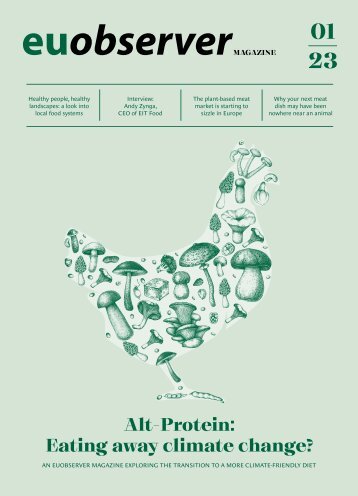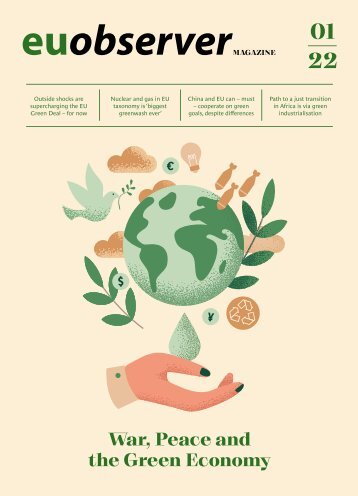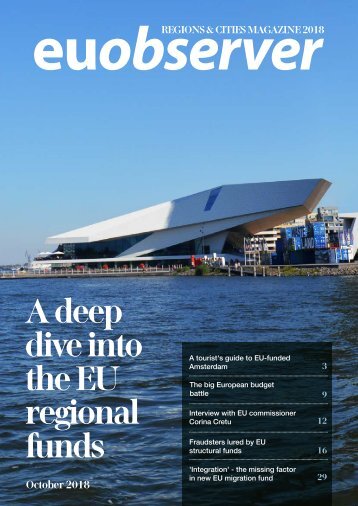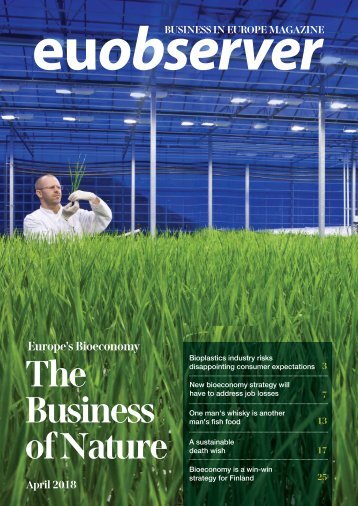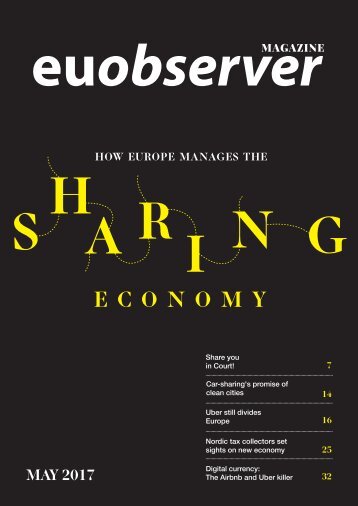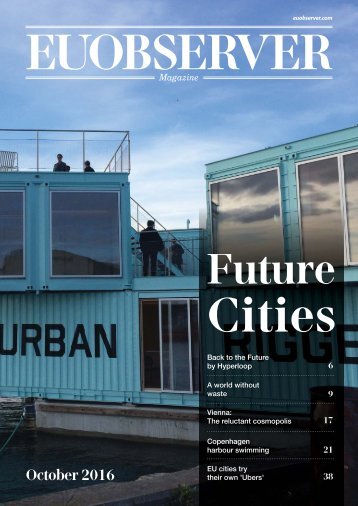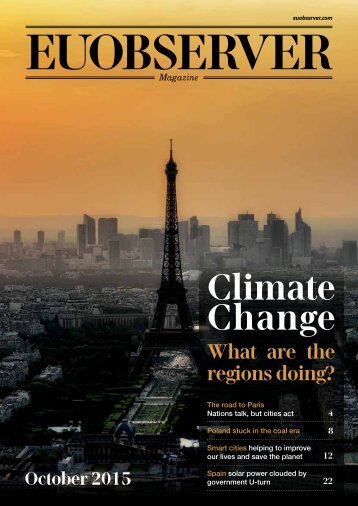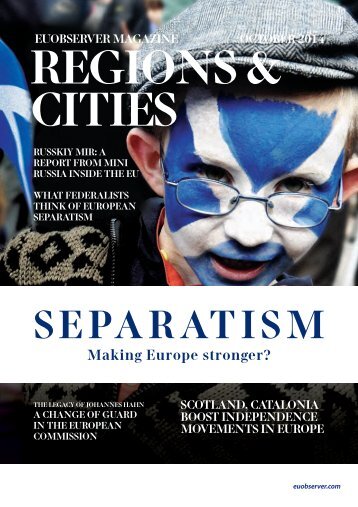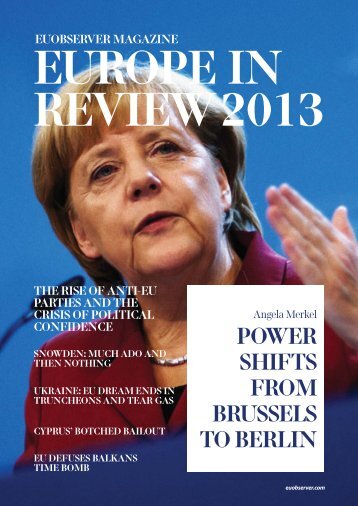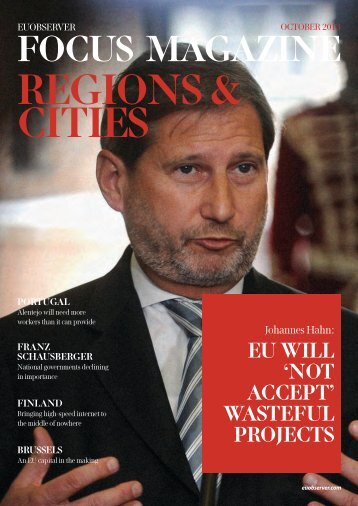Climate change: What are the regions doing?
- Text
- Transportation
- Hyperloop
- Europe
- Environment
- Change
- Energy
- Energy
- Euobserver
- Climate
- Cities
- Emissions
- Regions
Poland’s love affair
Poland’s love affair with coal won’t end anytime soon The coal-based energy sector puts Poland in the position of 22nd most air-polluting country in the world, but the industry provides a livelihood for hundred of thousands of people in Upper Silesia and has the potential to swing elections. By Paulina Pacula Around 70 percent of Poland’s 5.5 million households warm up their houses using coal installations – simply by using ovens. Photo: Edgar Zuniga EUobserver Magazine 2015 ––––– 08
In the small Polish town of Brzeszcze, part of the Upper Silesian coal basin, almost half of the 21,000 inhabitants depend on one employer: the KWK Brzeszcze mine, which is soon to be closed. More then 2,000 men stand to lose their jobs because, for the last couple of years, the mine has been unprofitable – for every tonne of coal sold, the company had to pay 265 zlotys extra. If the mine is closed, unemployment in the municipality will skyrocket from its already-high level of 11.6%. A similar fate probably awaits another 11,000 workers from unprofitable mines run by the biggest state mining company, Kompania Węglowa and 3,000 from JSW. “The situation in the mining sector is tragic and we are fighting to keep our livelihoods”, Roman Brudzinski, head of the JSW miners’ union, told EUobserver. Aleksander Sniegocki, an energy market and climate expert from the Warsaw Institute for Economic Studies, said that during the period of 2010 until 2013, the Polish government pumped 22 billion zlotys into the mines in the form of state subsidies. Poland is not only paying extra for every tonne of coal produced in its mines, but the industry itself does not add anything to the country’s GDP growth. results: we export only 10 million tonnes per year and [we] import [a] similar amount so the balance is zero,” Sniegocki said. Due to technological underdevelopment, the productivity of Polish mines is very low, with 648 tonnes of coal produced per worker per year while in the worst US mines it is more then 2,000 tonnes. In the biggest state-owned coal companies - Kompania Węglowa and JSW - labour costs constitute 50% of operating costs (compared to the privatised and profitable Bogdanka mine, where operating costs are around 20%). So why are politicians so eager to keep the coal industry alive? Dariusz Jabłoński, a political scientist from Warsaw University, told EUobserver: “[The] Polish coal industry employs around 104,000 people mainly in one region: Upper Silesia. Another 208,000 people are on miners’ pensions. Adding on those who are financially dependent on them we get to around 500,000 active voters.” “This is the reason why instead of the debate about climate goals before the Paris summit, Poland has a debate on how EU goals to cut CO2 emissions threatens the country’s economic interest,” Jablonski added. “The profitability of this industry is much lower than any other sector. The coal also doesn’t count in the export Poland, along with Bulgaria, are the countries with the worst air quality in the EU. Photo: Boguez Bilewski EUobserver Magazine 2015 ––––– 09
- Page 1 and 2: euobserver.com Magazine Climate Cha
- Page 3 and 4: PHOTOSSERIES How climate change may
- Page 5 and 6: “As cities, we can lead the way i
- Page 7: THE SMART DESTINATION FOR 2016. Wel
- Page 11 and 12: INNOVATION FOR GROWTH Ageing popula
- Page 13 and 14: Empty street in Warsaw. Street ligh
- Page 15 and 16: EUobserver Magazine 2015 ----- 15
- Page 17 and 18: Photo: DinosaursAreNotDead Climate
- Page 19 and 20: The ultimate target is to keep all
- Page 21 and 22: PHOTOSSERIES Small and big solution
- Page 23 and 24: Part of the problem stems from big
- Page 25 and 26: The largest network of regions in E
- Page 27 and 28: It all began when Statoil wanted to
- Page 29 and 30: The algae reactor in Kalundborg Gre
- Page 31 and 32: “ Only physics will decide if we
- Page 33 and 34: The most important policy change is
- Page 35 and 36: CHICKEN-AND-EGG PROBLEM Growth of t
Inappropriate
Loading...
Mail this publication
Loading...
Embed
Loading...

